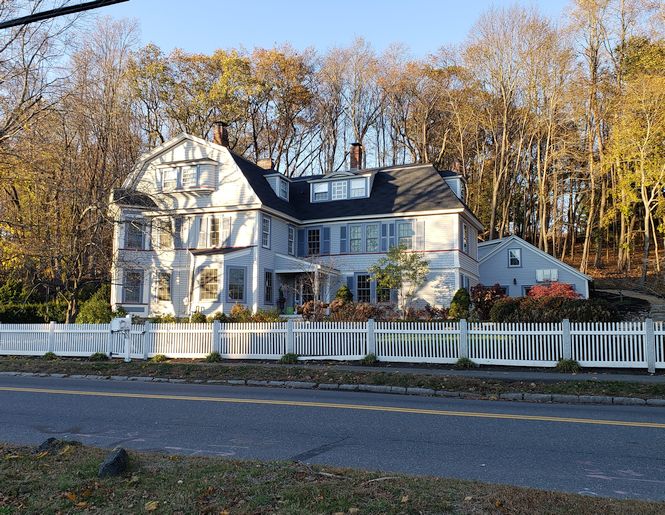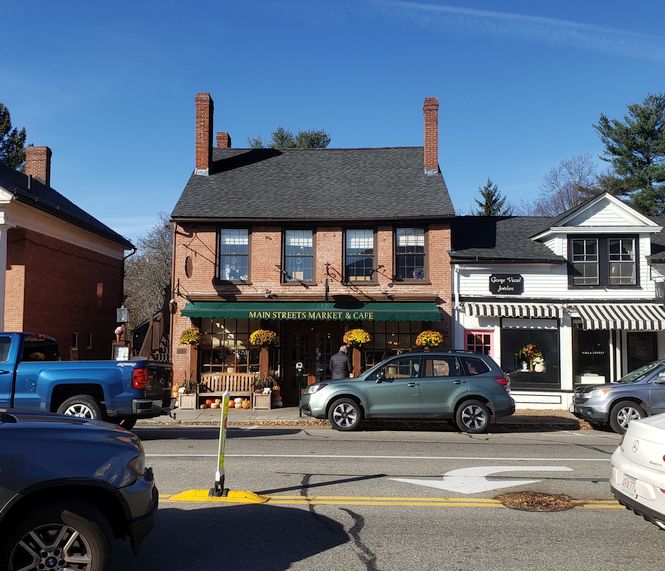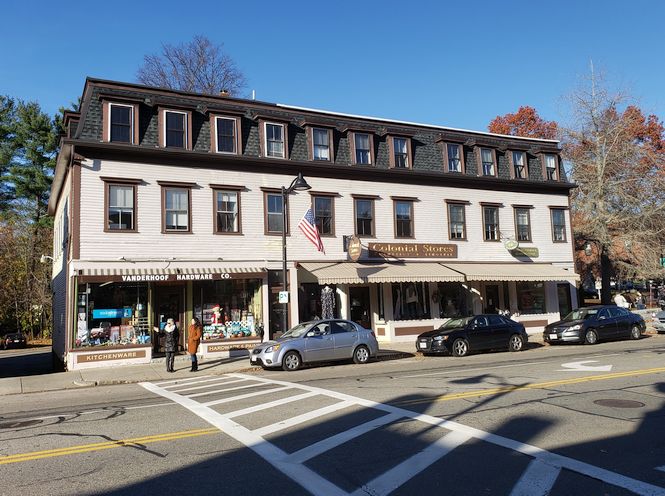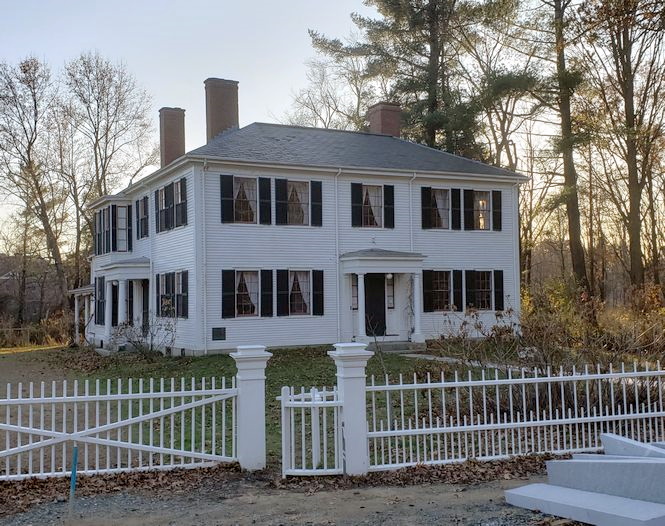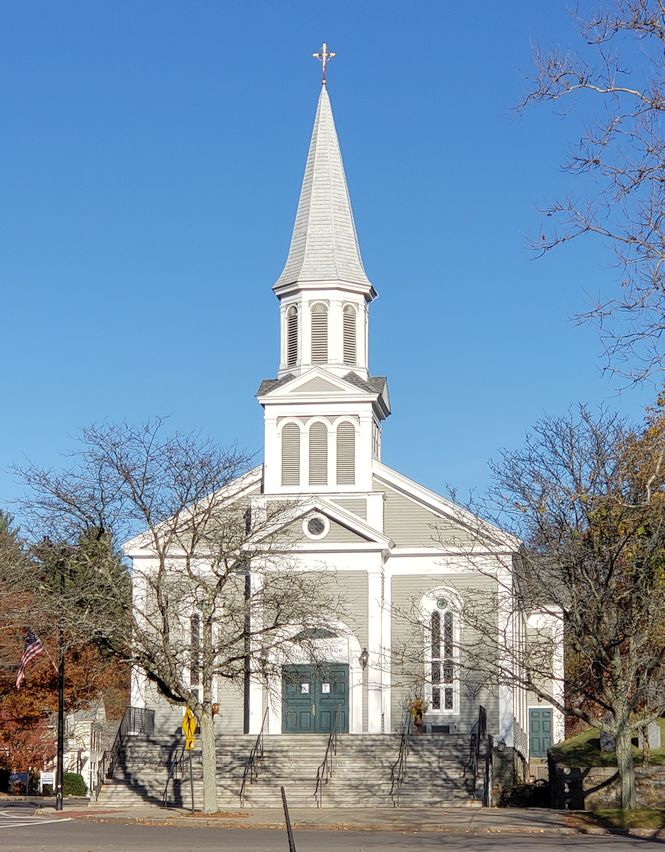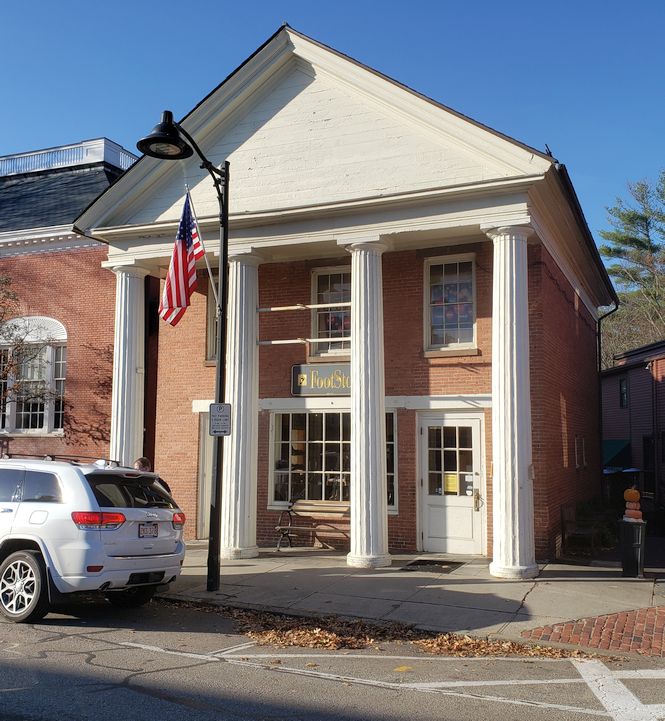The Wayside (1717)
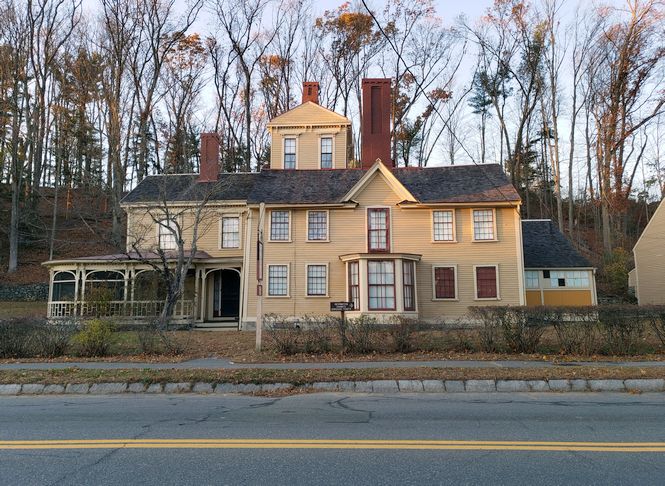
The Wayside in Concord (not to be confused with Longfellow’s Wayside Inn in Sudbury) is a historic home (now part of Minute Man National Historic Park) that was the residence of several famous authors over the years. The oldest part of the house may date to as early as 1717. Minuteman Samuel Whitney, who owned two slaves, lived in the house at time of the Battles of Lexington and Concord in 1775. The first of the authors to live in the house was Louisa May Alcott, whose parents, Amos Bronson Alcott and Abigail May Alcott, owned it from 1845 to 1852. They named their home “Hillside” and made additions to the original saltbox structure (see image below). Many of Louisa’s experiences in the house were later incorporated in her famous book Little Women. The family would eventually move to Boston, but later in the 1850s would live back in Concord in nearby Orchard House. Nathaniel Hawthorne purchased the house from the Alcotts in 1852. Hawthorne renamed the house the Wayside and made his own additions to the building around 1860. He died in 1864 and his widow sold the house in 1870, but their daughter Rose and her husband, George P. Lathrop later owned it for a time, selling it in 1883 to Boston publisher Daniel Lothrop and his wife Harriett. Under the pen name Margaret Sidney, Harriett wrote The Five Little Peppers series of children’s books, published between 1881 and 1916. They added a large piazza to the west side of the house in 1887. The house was inherited in 1924 by their daughter, Margaret Mulford Lothrop (1884-1970), who worked to preserve the house and opened it for tours. Margaret also wrote a book about the house, The Wayside: Home of Authors (1940). In the 1960s, the house became the first literary site to be acquired by the National Park Service.
Continue reading “The Wayside (1717)”
